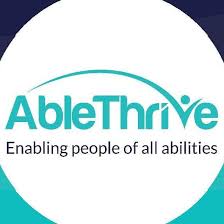 (This blog tells my family's story. To see more, click "blog" at the top of this webpage.) Occupational therapy at the hospital focused on Beth's hands. We learned about the tenodesis reflex which some quadriplegics used to grip items, though it required persistent practice to use it well. I tested the reflex. I set an elbow on a table with my forearm straight up and my hand falling forward. Keeping my fingers loose, I pulled my hand backwards at the wrist. As my hand tilted back, the tenodesis reflex automatically closed the space between my fingers and palm. Sitting in a wheelchair at a table, my youngest was determined to manipulate objects with her hands. To grip a pen with a fat handle, she held it between her index and middle fingers by tilting her right wrist forward and up, her hand entirely closed. At first, she couldn’t press the pen down enough for the ink to show. Beth also observed and listened. We heard about the 1995 accident that left actor Christopher Reeve immobile and dependent on a breathing tube. His spinal cord injury occurred one inch higher in the neck than Beth’s and required nursing care around the clock. I tried to be grateful for my daughter’s ability to breathe independently and move her arms, but I wanted so much more for her. We met others with spinal cord injuries at rehab. One had a brain injury in addition to a bruised cord. A middle-aged man with an injury like Beth’s had lived his life in a nursing home. A newly-injured young man with paraplegia (paralysis in two limbs, the legs) refused physical therapy and moved to a nursing home. He had full use of his hands and arms. When another boy was paralyzed during fusion surgery to correct his scoliosis, his mom told me that he would not get out of bed for weeks. Then, he would not go back to school. “I learned how some people given the same situations react in opposite ways. I have seen how people take so much for granted,” Beth said as a 14 year old. “Some people had a tendency to stop. They wouldn’t try to be independent. That’s always been a goal of mine—to be independent.” Beth’s outlook stayed hopeful, but in a vague, trusting way. She had no idea where our future adventures would take us.
10 Comments
 (This blog tells my family's story. To see more, click "blog" at the top of this webpage.) When we arrived in Green Springs, Beth had a sunny hospital room to herself. We met the physical therapist who was an expert on spinal cord injury. With a big heart and bigger personality, Laraine would not disappoint. Laraine emphasized the strenuous work required over months and years for a C6-7 quadriplegic to be less dependent. Beth had zero strength—even in her arms and trunk where some of the muscles and nerves still connected to her spinal cord. I couldn’t imagine my youngest doing anything on her own, but she believed. The first time in physical therapy, Beth lay face down on her stomach, unable to lift her shoulders. At all. Sitting with her legs straight out in front, she could not keep her balance. Laraine supported her every step of the way, along with Jill or Amy. There was little progress in the first weeks. “At the rehab hospital,” Beth said, “the simplest tasks of putting my shoes on or sitting up by myself were the hardest challenges of the day. Transferring from place to place was impossible for me to do on my own. Wheeling myself any distance was difficult. My life consisted of two long physical therapy sessions a day where my therapists had no concept of being tired. They pushed me to exhaustion, but I knew how much they were helping and I appreciated it.” Beth looked forward to mail deliveries, surprised at all of the well wishes. We were overwhelmed by the generosity of our hometown of Tiffin, Ohio. My co-workers at the Tiffin Developmental Center donated weeks of sick leave time to me. The maintenance workers at the Center also built a long wheelchair ramp that connected our back door to the detached garage. John, Maria, and Ben brought more get-well notes and gift cards for gasoline and restaurants from friends and family. And news of an unusual gift. In elementary school, Beth had told her principal about the African Gray parrot she wanted to own someday. The principal collected donations from staff and students in the Tiffin City Schools to buy a young parrot and a large cage. Flowers arrived from the coaches of high school volleyball, the team she would have played on, and also from her club volleyball team, whose season ended weeks before. In the evenings, Beth and I took turns reading aloud from the brand-new Harry Potter book, Goblet of Fire, another gift from my co-workers. She could barely hold the book, even though it rested on a small table over the bed. At first, turning pages was impossible and we used clothespins to keep the pages open. We put a fat tube around a pencil to use the eraser end to turn a page. That worked until weeks later when she patiently figured out how to use her hands to accomplish the job. “Rehab was a great experience,” Beth said. “I was too busy to think about what had happened to me or to become depressed. Every new thing that I accomplished became a celebration. I was in another world. My family was always there. My best friends visited me often and even moved a birthday party to the rehab center so I could be there. The therapists became a second family to me.” Five baby African Gray parrots visited Beth in Green Springs. Propped up on the hospital bed, she cradled the noisy babies on her lap and picked the one that would be hers when she moved back home. The kindness of family, friends, and strangers would be repeated by many in other times and places.  (This blog tells my family's story. To see more, click "blog" at the top of this webpage.) Three days after her second neck surgery, Beth left intensive care on a stretcher in an ambulance. The rehab center in Toledo had a pediatric wing with six hospital beds in one room. Next to us, a little girl with a brain injury made unhappy sounds in a bed with high rails. We had moved from a private room in intensive care with constant checks by nurses to...waiting. Waiting for a water pitcher and a cup. Waiting for a box of tissues to wipe away my escaping tears. Waiting for everything, anything. The first day held an eternity of disappointing moments. How was this the magical place where Beth would regain at least a little strength? The second morning in rehab, a nurse and I transferred my daughter from the bed to a wheelchair with difficulty. I pushed her down the hall to the first physical therapy session. During another long wait, I tilted the chair back to alleviate her dizziness. She had major adjustments to make--including the transition to a sitting position. When it was our turn, the therapist said little and moved Beth to a mat table. The therapist solved the immediate, inevitable dizziness by returning her to the wheelchair and tilting the chair back. Done. We considered other rehab choices in northwest Ohio, not realizing that top-ranked centers farther away also were an option. Beth made the decision to transfer to the St. Francis Center to work with a physical therapist who was an expert on spinal cord injuries. When we traveled by ambulance again, our destination was the tiny town of Green Springs, a fifteen-minute drive from home. It was a decision we would not regret.  Our story continues from the moment in my first blog post when Beth tells me that everything will be okay. The Jaws of Life frees her from the car. She is rushed to a helicopter, blades spinning. “I was, strangely, very calm,” Beth wrote in a school essay. “A nurse told me I was in shock. The doctors stuck many needles in me during the helicopter flight that seemed to last only a minute. I found out later that these were high doses of medicine that slows the chain reaction of nerve damage. I landed at St. Vincent hospital in Toledo." "I was taken to an exam room and they cut off my clothes. They jokingly asked me if those were my favorite jeans, and of course, they were. When I was taken to a room in intensive care, my dad asked me if I wanted to know what the doctors had just told him minutes before: I was paralyzed from the chest down. I believed it, but it did not scare me.” I was scared enough for both of us. The single tragedy of not walking spiraled out of control with shattered neck bones, surgeries, a cut spinal cord, paralyzed organs, and serious health risks of quadriplegia. I waited on edge for her optimism to crash. I felt like nothing would ever be okay again. Beth's morphine haze faded as we prepared to leave intensive care for rehab, ten days after the accident. Her experience continued to be different from mine. "Accepting my new disability never was a real issue for me. The issue was what needed to be done next." |
Cindy KolbeSign up for my Just Keep Swimming Newsletter by typing your email address in the box. Thanks!Categories
All
Archives
November 2022
|

 RSS Feed
RSS Feed











